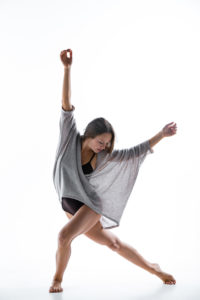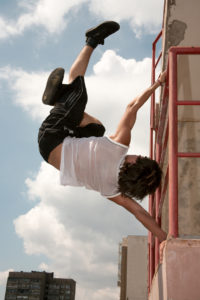During a recent master class in Berlin, I introduced the “mixed seven-rings.” These Laban scales are analogous to the major diatonic scales in music. Participants were instructed to use the seven “signal points” of the scale as if they were musical notes and to compose a “spatial melody” in four measures. 
Students could use the signal points in any order and make them any duration. Individuals could embody the specified directions in any way they chose. Yet, interestingly, when we watched these solos, the freely constructed spatial melodies retained the fundamental qualities that Laban highlights in his unpublished writings on the mixed seven-rings. That is, these choreutic forms combine arabesque-like shapes that penetrate space with attitude-like shapes that encompass space.
As one participant commented to me later, this creative assignment made space harmony relevant. Rather than “received wisdom,” that is, spatial sequences taught and repeated by rote, Choreutics came alive. It became a design source for dance!





 In 2011, I participated in a pilot study examining the validity of Movement Pattern Analysis profiles in predicting decision-making patterns. Although MPA has been used by senior business teams for over 50 years, its potential application to the study of military and political leaders has barely been tapped. The pilot study was the first test of this new area of application.
In 2011, I participated in a pilot study examining the validity of Movement Pattern Analysis profiles in predicting decision-making patterns. Although MPA has been used by senior business teams for over 50 years, its potential application to the study of military and political leaders has barely been tapped. The pilot study was the first test of this new area of application. The application of Movement Pattern Analysis in building teams was not the focus of my experiment with making basic profiles of undergraduate dance majors for a seminar on career development. However, I realized that an implicit team relationship clearly exists between student and teacher.
The application of Movement Pattern Analysis in building teams was not the focus of my experiment with making basic profiles of undergraduate dance majors for a seminar on career development. However, I realized that an implicit team relationship clearly exists between student and teacher. I utilized the
I utilized the  by Kathie Debenham
by Kathie Debenham by Laurie Cameron
by Laurie Cameron